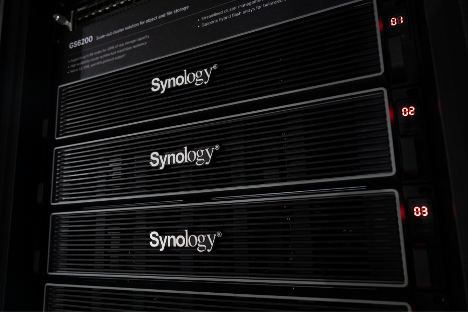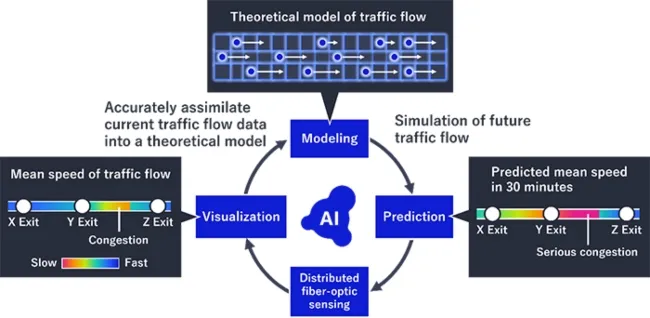NEC technology predicts sudden traffic congestion in real time using optical fiber cables
NEC Corporation has announced the development of an optical fiber sensing technology to monitor road conditions and accurately predict sudden traffic congestion in real-time. By collecting
data from existing optical fiber communications cables and analyzing real-time
traffic flow data using a proprietary AI model, NEC has reduced prediction
errors by 80% compared to conventional methods.
This technology enables effective traffic control, including the
arrangement of detour routes, thereby contributing to the resolution of
societal challenges such as logistics issues and CO2 emissions.
Traffic congestion is a
significant social issue, threatening safety and causing substantial economic
losses. In particular, congestion on expressways—the backbone of many logistics
networks—has a significant economic impact. Addressing this issue requires
real-time understanding of road conditions for both immediate congestion
mitigation and proactive avoidance, as well as highly accurate congestion
prediction based on up-to-date data.
Current monitoring approaches primarily rely on point-based
instruments, including cameras and loop detectors, as well as probe vehicle
data. However, both have limitations: the former is costly to install and
maintain over entire road networks, and the latter only provides data when
equipped vehicles pass by specific receiver points, limiting real-time and
continuous coverage. Moreover, existing congestion prediction models heavily
rely on long-term historical data, making it difficult to capture the emergence
and propagation of sudden, unexpected congestion patterns.
To address these challenges, NEC has developed a technology that
utilizes optical fiber cables—originally installed for communications purposes
alongside roads—as extensive, distributed sensors for collecting real-time,
continuous traffic flow data across entire routes. NEC’s unique AI-powered
model then provides real-time, high-precision predictions regarding the
development and clearance of sudden congestion.


































Leave A Comment